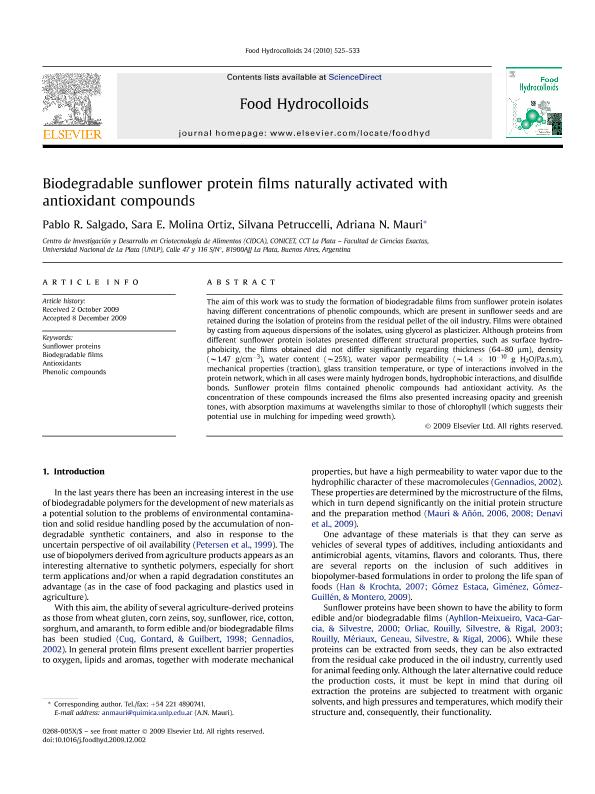Artículo
Biodegradable sunflower protein films naturally activated with antioxidant compounds
Fecha de publicación:
07/2010
Editorial:
Elsevier
Revista:
Food Hydrocolloids
ISSN:
0268-005X
e-ISSN:
1873-7137
Idioma:
Inglés
Tipo de recurso:
Artículo publicado
Clasificación temática:
Resumen
The aim of this work was to study the formation of biodegradable films from sunflower protein isolates having different concentrations of phenolic compounds, which are present in sunflower seeds and are retained during the isolation of proteins from the residual pellet of the oil industry. Films were obtained by casting from aqueous dispersions of the isolates, using glycerol as plasticizer. Although proteins from different sunflower protein isolates presented different structural properties, such as surface hydrophobicity, the films obtained did not differ significantly regarding thickness (64-80 μm), density (∼1.47 g/cm-3), water content (∼25%), water vapor permeability (∼1.4 × 10-10 g H2O/Pa.s.m), mechanical properties (traction), glass transition temperature, or type of interactions involved in the protein network, which in all cases were mainly hydrogen bonds, hydrophobic interactions, and disulfide bonds. Sunflower protein films contained phenolic compounds had antioxidant activity. As the concentration of these compounds increased the films also presented increasing opacity and greenish tones, with absorption maximums at wavelengths similar to those of chlorophyll (which suggests their potential use in mulching for impeding weed growth).
Palabras clave:
ANTIOXIDANTS
,
BIODEGRADABLE FILMS
,
PHENOLIC COMPOUNDS
,
SUNFLOWER PROTEINS
Archivos asociados
Licencia
Identificadores
Colecciones
Articulos(CIDCA)
Articulos de CENTRO DE INV EN CRIOTECNOLOGIA DE ALIMENTOS (I)
Articulos de CENTRO DE INV EN CRIOTECNOLOGIA DE ALIMENTOS (I)
Citación
Salgado, Pablo Rodrigo; Molina Ortiz, Sara Eugenia; Petruccelli, Silvana; Mauri, Adriana Noemi; Biodegradable sunflower protein films naturally activated with antioxidant compounds; Elsevier; Food Hydrocolloids; 24; 5; 7-2010; 525-533
Compartir
Altmétricas




